The agapornis genus is a family of eight species of small parrot found throughout sub-Saharan African and Madagascar. Their sociable and affectionate nature has made them some of the most commonly kept parrots in the world.
In this article, we look at the different lovebird species that are available in Australian aviculture and how to get started as a lovebird keeper.
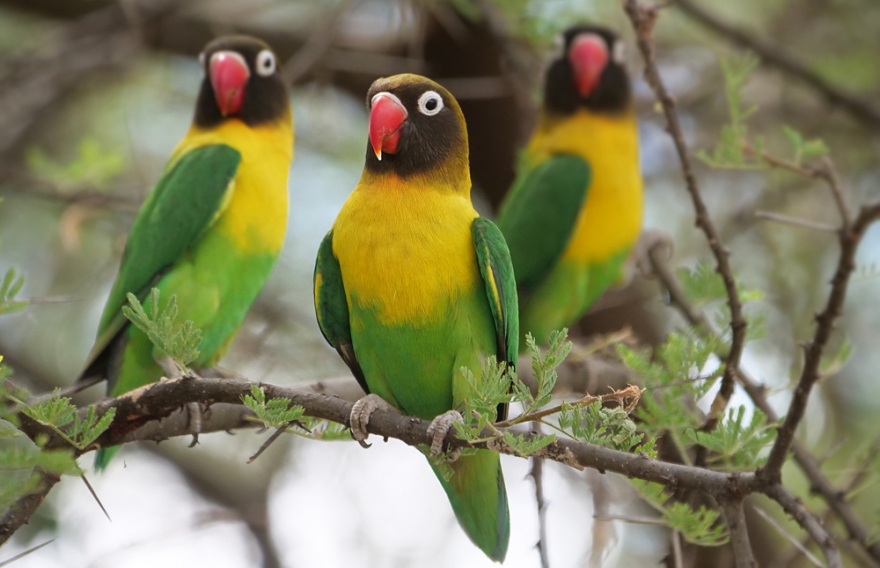
Lovebirds in Australian aviculture
There are five African lovebird species represented in Australian aviculture.
| Masked Lovebird Agapornis personatus Species Profile |
Sometimes called the yellow-collared lovebird, the masked lovebird is found in northeast Tanzania. They’re extremely easy to keep, and have dozens of colour mutations established. | 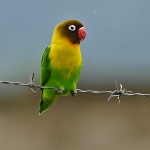 |
| Fischer’s Lovebird Agapornis fischeri Species Profile |
Fischer’s lovebirds are another species found in northern Tanzania. Like the masked lovebird, they’re very easy to keep and are availbale in many different colours. | 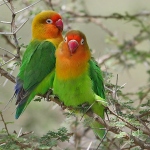 |
| Peach-faced Lovebird Agapornis roseicollis Species Profile |
The peach-faced, known also as the rosy-collared or rosy-faced lovebird, is the lovebird species most commonly kept as a pet. They’re a bit less agressive than the other common species, while being equally easy to keep. | 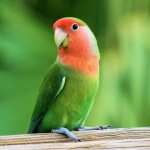 |
| Nyasa Lovebird Agapornis lilianae Species Profile |
Nyasa lovebirds (also known as the Lillian’s lovebird) is found in Mozambique and surrounding countries. It’s the smallest of the lovebirds, and the smallest parrot on the African continent. They are considered the most difficult to breed of the lovebirds in Australia. | 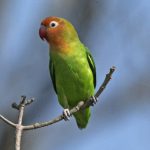 |
| Black-cheeked Lovebird Agapornis nigrigenis |
Black-cheeked lovebirds are found in a small patch of Zambia, and are the rarest of the lovebird species in Australian aviculture. Their rarity is due to the very small numbers that were initially imported, and not a reflection of their breeding difficulty. | 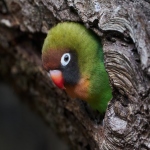 |
Choosing a lovebird species
The different lovebird species—especially those in the “eye ring” group—will hybridize with other lovebird species extremely easiy. Due to a combination of carelessness and the ease at which beginners can confuse the different species, it is becoming increasingly more difficult to find non-hybrid lovebirds.
As it’s not possible to import new birds from the wild, it’s important to preserve the purity of the five distinct lovebird species available in Australia. You should not, under any circumstance, house different species of lovebirds together in the same aviary.
Peachface lovebirds, masked lovebirds, and fischer’s lovebirds are all fairly common, and are appropriate birds for beginners. They can all be kept in an aviary or as pets.
The nyasa lovebird is only slightly more challenging to keep than the previous three species, but as they’re available in far few numbers in Australia, it’s best to leave them to more experienced keepers. Black-cheeked lovebirds are the rarest species in Australia and are best suited to experienced or specialist breeders.
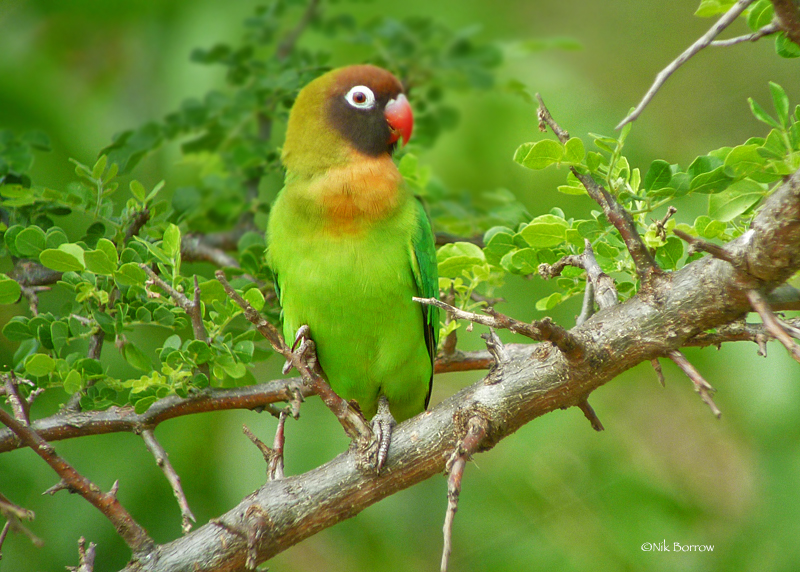
Sourcing quaility lovebirds in Australia
Lovebirds are available in abundance in Australia. Most specialist pet stores, bird dealers, and classified websites will have a wide variety of lovebirds in a multitude of different colours.
Sourcing wild-type (or “pure normal”) lovebirds is an order of magnitude more difficult. Due the ease with which the different agapornis species can cross breed, and the vast number of established colour mutations, the majority of lovebirds available in Australia are either mutations or hybrids. Even birds that appear visually identical to their wild counterparts are likely to be carrying mutation genes.
Pure normal lovebirds demand a premium price, and should only be purchased from reputable breeders or dealers to ensure they’re genuine.
Housing Lovebirds
Lovebirds are popular as pets and—as long as they’re frequently allowed out to exercise and socialise—can be housed in a medium-sized cage in a spot protected from cold draughts, larger pets, and direct sunlight.
The best way to house lovebirds is in an outdoor aviary, either as a single pair or in a small colony. A standard-sized 2m x 1.5m aviary can comfortably hour 2-3 pairs of lovebirds. Lovebirds are voracious chewers, so the aviary will need to be made from steel and have a paved or concrete floor to prevent escapes.
The aviary should be protected from cold winds and unrelenting direct sunlight. The food supply needs to be sheltered, as rain will quickly spoil seed and create a health hazard.
Most lovebirds will roost in their nest throughout the year, so boxes should not be removed at the end of the breeding season. They like to refurbish their nest boxes often, so nesting materials (like straw, palm fronds, and grass) should be available at all times. Non-toxic leaves and branches should be provided as a source of stimulation.
You should only house one species of lovebird in each aviary, as hybridization is very common. Hybrids between the species with a fleshy white eye ring are generally fertile, while hyrbids between peach-faced lovebirds and “eye ring” species are generally infertile.
Australia’s Lovebird Community
The African Lovebird Society of Australia (ALBS) is the largest bird club in Australia for fanciers who specialise in the lovebird species. They run annual shows, meetups, and bird sales in New South Wales; and are a great organisation to join if you’re interesting in learning more about these delightful little parrots.